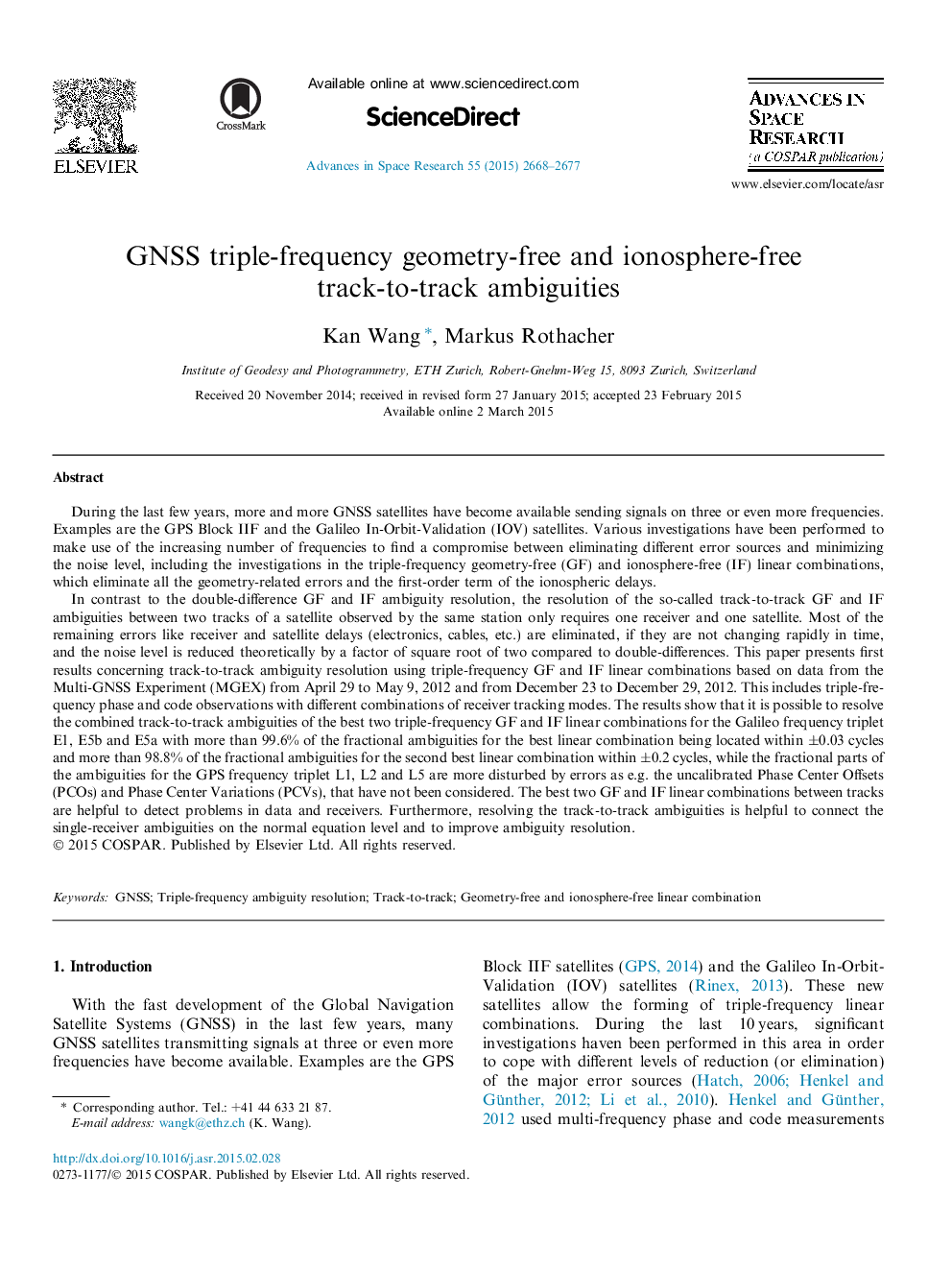| کد مقاله | کد نشریه | سال انتشار | مقاله انگلیسی | نسخه تمام متن |
|---|---|---|---|---|
| 1763412 | 1020001 | 2015 | 10 صفحه PDF | دانلود رایگان |

During the last few years, more and more GNSS satellites have become available sending signals on three or even more frequencies. Examples are the GPS Block IIF and the Galileo In-Orbit-Validation (IOV) satellites. Various investigations have been performed to make use of the increasing number of frequencies to find a compromise between eliminating different error sources and minimizing the noise level, including the investigations in the triple-frequency geometry-free (GF) and ionosphere-free (IF) linear combinations, which eliminate all the geometry-related errors and the first-order term of the ionospheric delays.In contrast to the double-difference GF and IF ambiguity resolution, the resolution of the so-called track-to-track GF and IF ambiguities between two tracks of a satellite observed by the same station only requires one receiver and one satellite. Most of the remaining errors like receiver and satellite delays (electronics, cables, etc.) are eliminated, if they are not changing rapidly in time, and the noise level is reduced theoretically by a factor of square root of two compared to double-differences. This paper presents first results concerning track-to-track ambiguity resolution using triple-frequency GF and IF linear combinations based on data from the Multi-GNSS Experiment (MGEX) from April 29 to May 9, 2012 and from December 23 to December 29, 2012. This includes triple-frequency phase and code observations with different combinations of receiver tracking modes. The results show that it is possible to resolve the combined track-to-track ambiguities of the best two triple-frequency GF and IF linear combinations for the Galileo frequency triplet E1, E5b and E5a with more than 99.6% of the fractional ambiguities for the best linear combination being located within ±±0.03 cycles and more than 98.8% of the fractional ambiguities for the second best linear combination within ±±0.2 cycles, while the fractional parts of the ambiguities for the GPS frequency triplet L1, L2 and L5 are more disturbed by errors as e.g. the uncalibrated Phase Center Offsets (PCOs) and Phase Center Variations (PCVs), that have not been considered. The best two GF and IF linear combinations between tracks are helpful to detect problems in data and receivers. Furthermore, resolving the track-to-track ambiguities is helpful to connect the single-receiver ambiguities on the normal equation level and to improve ambiguity resolution.
Journal: Advances in Space Research - Volume 55, Issue 11, 1 June 2015, Pages 2668–2677